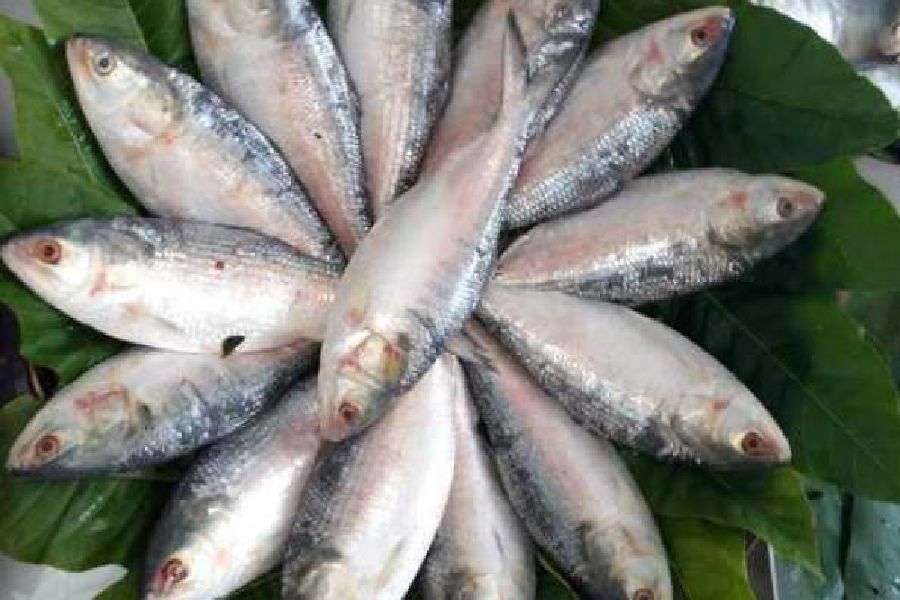The interim government in Bangladesh said on Wednesday that it would send over 2,420 tonnes of hilsa to Bengal in an export window that would be open till October 12, Durga Puja’s Dashami.
The commerce ministry notification from Dhaka did not spell out when the exports would begin. Hilsa importers in Calcutta said they were expecting the first consignment to reach on Thursday.
“We have made all necessary arrangements to receive the first consignment of hilsa from Bangladesh. The window is small but we hope for the best,” said Syed Anwar Maqsood, secretary of the Fish Importers’ Association in Calcutta.
Wednesday’s notification came within three days of Dhaka deciding to allow the export of 3,000 tonnes of hilsa to Bengal, rolling back its earlier decision to stop the customary festival season export of the prized catch from the Padma.
The Dhaka notification has listed 49 exporters permitted to send hilsa across the border. Copies of the notification have been sent to the Bangladesh high commission in Delhi and the deputy high commission in Calcutta.
Many consider ilish (hilsa) from the Padma to be the tastiest. However, that is a matter of fierce debate. Many consider the catch in the Hooghly, when seawater moves inland along with its fish, to be better. The delicate mix of the sea’s saltiness and the sweetness of freshwater makes the fish delectable. But that catch is too little to satiate Bengal’s voracious appetite.
People who know their fish said the high fat content makes the Padma ilish unique.
Anyway, the best time of the year for the hilsa catch is over.
“Around mid-September, a full-grown hilsa prepares to lay eggs in freshwater. The period just before this is when the fish tastes the best,” said Asim Kumar Nath, who has been studying the migration of hilsa at Sidho-Kanho-Birsha University in Jhargram.
“The fish releases polyunsaturated fatty acid (PUFA) with a host of other chemicals before release of eggs and that makes it tasty.”
Hilsa exporters in Bangladesh said many factors, including overfishing, climate change and human intervention, have resulted in the gradual decline in the fish haul over the years.
“This year, the hilsa catch is even lower than previous years. The inclement weather for the last two days has made it more difficult for the trawlers to go out,” Kazi Abdul Mannan, director of Seven Star Fish Processing Limited in Pabna, Bangladesh, told Metro.
“The exporters would find it difficult to send the entire 2,400 tonnes of hilsa by October 12. A 22-day ban on hilsa fishing in Bangladesh starts on October 13 and will be in place till November 3.”
Last year, Bangladesh’s commerce ministry allowed exporters to send 3,950 tonnes of hilsa to India on for Puja. Importers said only 1,300 tonnes finally reached.










